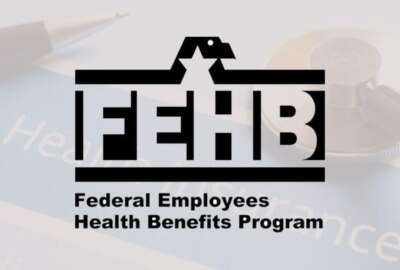Top 10 things every fed should know before retiring
Tammy Flanagan, the senior benefits director at the National Institute of Transition Planning, joined with Francis Rose to discuss the top 10 things federal emp...
wfedstaff | June 4, 2015 2:40 pm
By Jack Moore
Federal News Radio
The first year of retirement means a lot of changes to health insurance, life insurance and a slew of other benefits.
Tammy Flanagan, the senior benefits director at the National Institute of Transition Planning, joined In Depth with Francis Rose to discuss the top 10 things federal employees should know as they make the transition from active-duty fed to retiree.
“As you’re thinking about when you’re going to retire, start thinking about what that transition’s going to be like,” Flanagan said. “That could drive your date of retirement — knowing that you need to have so much money saved up to hold you over during the interim period, and you might want to make some changes to tax withholdings. So you really have to give it some thought before you set the data, before you fill out the application.”
Retirement planning should begin at least five years out from a fed’s expected retirement, Flanagan said. Employees should request their first retirement estimate, which explains how much they’ll draw in income after retirement. And within a year of retirement, feds should start filling out all the paperwork.
Flanagan’s retirement checklist
- Your lump sum annual-leave check might be needed to pay your bills for the first few months of retirement since your “interim” checks will not be the full amount of your annuity. They should be close to 90 percent of your agency’s estimate, but that isn’t always the case, and if you are entitled to a FERS supplement, that is not included.
- Your FEHB and FEGLI (health and life insurance) will continue automatically, and OPM will deduct the premiums from your full annuity when it is finalized. As long as you are eligible for these benefits, they will be transferred to OPM by your agency for you.
- That is not the case for FEDVIP (dental and vision). Your payroll office will inform “benefeds” that you have retired and you will receive a letter letting you know that premiums will be deducted for dental and vision when your retirement is finalized and, while in interim pay, you will be billed.
- For long-term care insurance you need to contact Long Term Care Partners to let them know you are retiring if you pay by payroll deduction. You cannot have deductions from your annuity until your annuity is finalized, so it might be easier to do a direct deposit from a bank account if you don’t want to write a check.
- OPM does not withhold state income taxes from your interim retirement checks. You should arrange to pay quarterly state tax payments until you can elect to have a withholding from your annuity. You will have federal taxes withheld.
- You should wait at least 30 days after you retire if you wish to make a withdrawal from your TSP account. You may elect a partial or a full withdrawal or you can postpone your election until later. If you are over age 70-and-a-half when you retire, then you must take your first withdrawal by April 1st of the year following your retirement. The TSP will inform you of this as long as they have your current address, so don’t forget to update your address with the TSP if you move after you retire.
- Three of your beneficiary forms follow you into retirement and should be kept up to date: TSP, retirement and FEGLI.
- Your lump sum annual-leave check will be paid from your agency’s payroll office and should be received within six weeks of your separation. The deductions will include taxes but not retirement contributions, insurance or TSP contributions.
- If you are going to be out of town or at a different phone number or address in the initial months following your retirement, be sure to include this information on your retirement application or to OPM directly after you retire and receive your annuitant number. OPM may need to reach you while your claim is being processed.
Be prepared to be in an “interim” retired status for up to one year. For some people, this might only be one to three months, but for a few unlucky folks it can be more than a year. There are a variety of reasons for this, but mainly it is due to a massive backlog of retirements at OPM.
Copyright © 2024 Federal News Network. All rights reserved. This website is not intended for users located within the European Economic Area.





